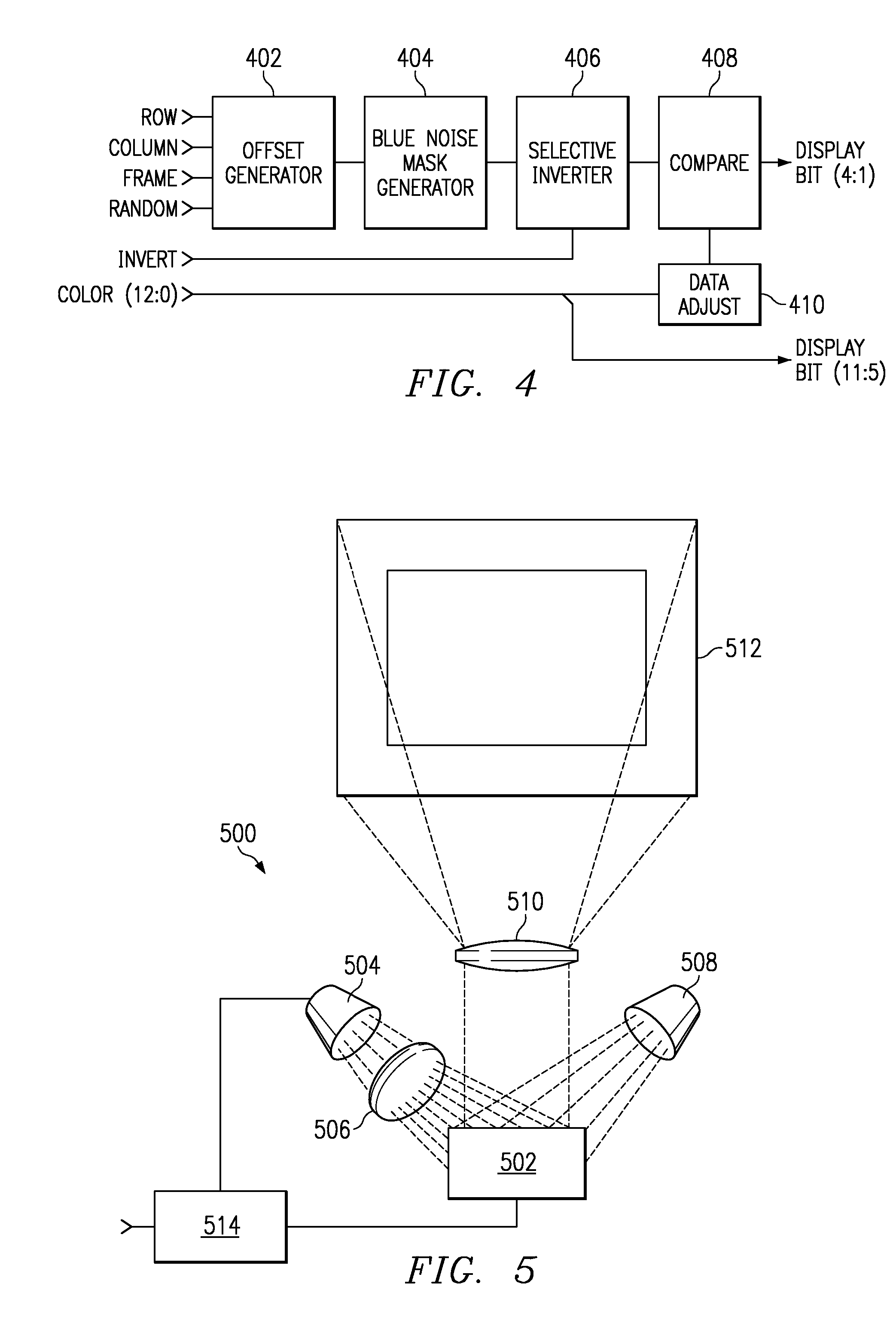Blue Noise Spatial Temporal Multiplexing
a spatial temporal multiplexing and blue noise technology, applied in the field of digital display systems, can solve the problems of difficult to create small intensity resolution steps, and difficult to achieve small intensity resolution steps. achieve the effect of smooth transition
- Summary
- Abstract
- Description
- Claims
- Application Information
AI Technical Summary
Benefits of technology
Problems solved by technology
Method used
Image
Examples
Embodiment Construction
[0031] A new pulse width modulation display method has been developed that greatly reduces the PWM quantization and temporal contouring errors associated with prior PWM display systems. The new method allows much finer control of fractional display bits, virtually eliminating noticeable quantization contouring. The new method also enables each successive higher order bit to be gradually phased in to reduce PWM temporal contouring. The new method relies on a large multi-level mask to reduce the duty cycle of the fractional bits. Preferably the multi-level mask does not have a low-frequency component so that the eye is unable to detect the mask. Preferably the mask is altered, by changing the mask values and / or moving the mask relative to the image, at a rate high enough to avoid detection of the mask.
[0032] As discussed above, typical PWM display systems individually control the duty cycle of each pixel to form an image. At any given time, each pixel of the display typically can onl...
PUM
 Login to View More
Login to View More Abstract
Description
Claims
Application Information
 Login to View More
Login to View More - R&D
- Intellectual Property
- Life Sciences
- Materials
- Tech Scout
- Unparalleled Data Quality
- Higher Quality Content
- 60% Fewer Hallucinations
Browse by: Latest US Patents, China's latest patents, Technical Efficacy Thesaurus, Application Domain, Technology Topic, Popular Technical Reports.
© 2025 PatSnap. All rights reserved.Legal|Privacy policy|Modern Slavery Act Transparency Statement|Sitemap|About US| Contact US: help@patsnap.com



